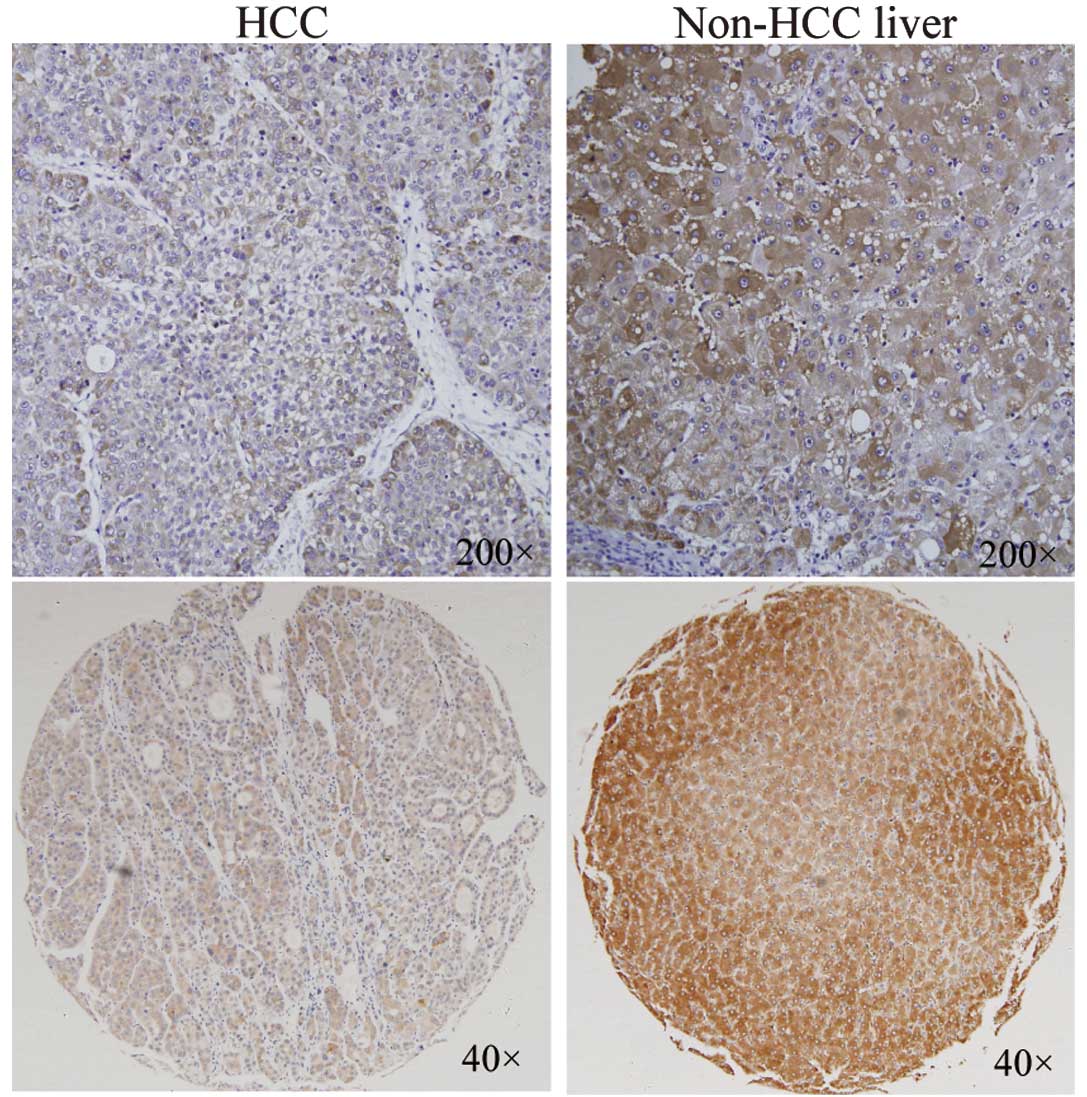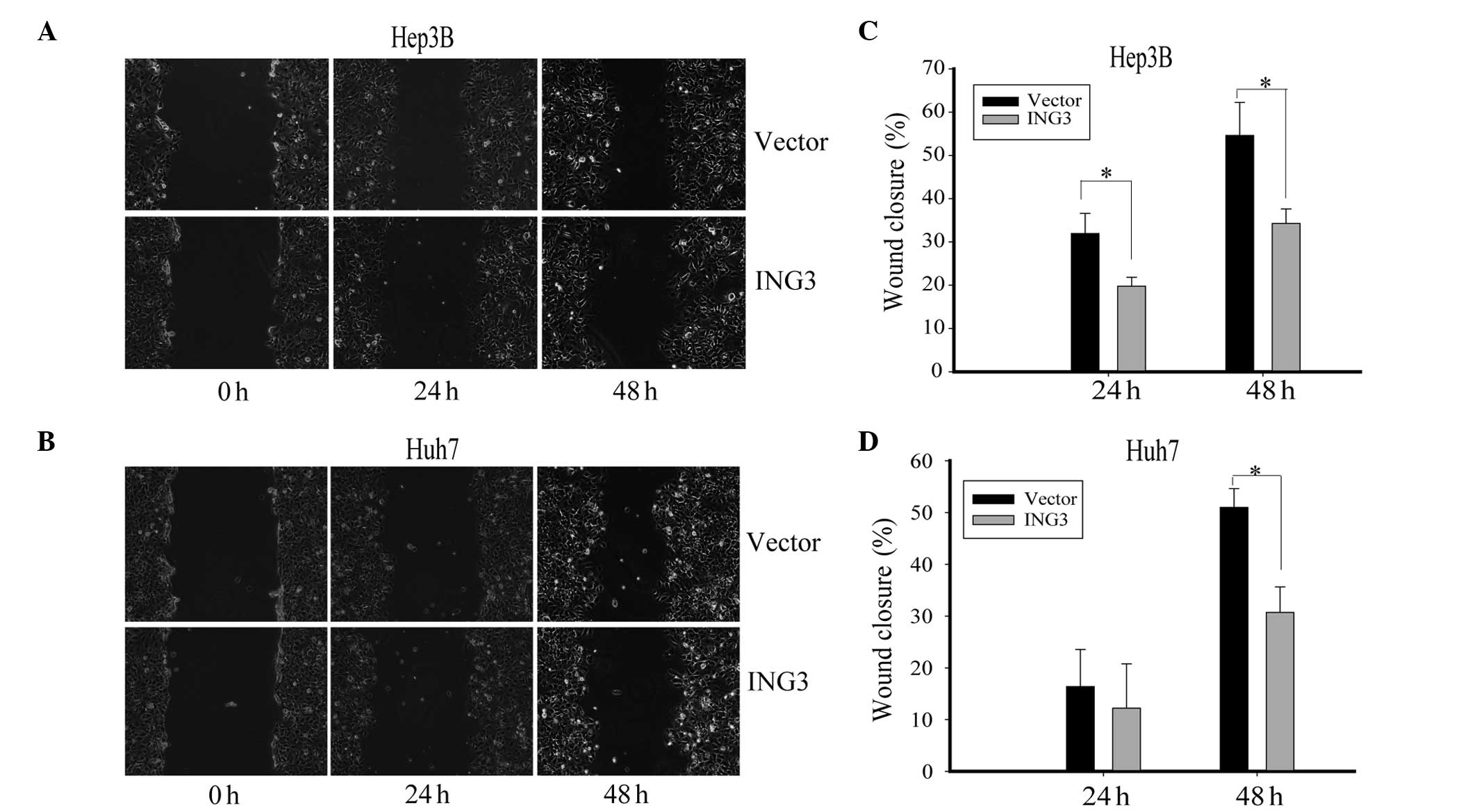|
1
|
He GH, Helbing CC, Wagner MJ, Sensen CW
and Riabowol K: Phylogenetic analysis of the ING family of PHD
finger proteins. Mol Biol Evol. 22:104–116. 2005.PubMed/NCBI
|
|
2
|
Toyama T, Iwase H, Watson P, et al:
Suppression of ING1 expression in sporadic breast cancer. Oncogene.
18:5187–5193. 1999. View Article : Google Scholar : PubMed/NCBI
|
|
3
|
Nagashima M, Shiseki M, Miura K, et al:
DNA damage-inducible gene p33ING2 negatively regulates cell
proliferation through acetylation of p53. Proc Natl Acad Sci USA.
98:9671–9676. 2001. View Article : Google Scholar : PubMed/NCBI
|
|
4
|
Shimada Y, Saito A, Suzuki M, Takahashi E
and Horie M: Cloning of a novel gene (ING1L) homologous to ING1, a
candidate tumor suppressor. Cytogenet Cell Genet. 83:232–235. 1998.
View Article : Google Scholar : PubMed/NCBI
|
|
5
|
Nagashima M, Shiseki M, Pedeux RM, et al:
A novel PHD-finger motif protein, p47ING3, modulates p53-mediated
transcription, cell cycle control, and apoptosis. Oncogene.
22:343–350. 2003. View Article : Google Scholar : PubMed/NCBI
|
|
6
|
Shiseki M, Nagashima M, Pedeux RM, et al:
p29ING4 and p28ING5 bind to p53 and p300, and enhance p53 activity.
Cancer Res. 63:2373–2378. 2003.PubMed/NCBI
|
|
7
|
Zhang X, Xu LS, Wang ZQ, et al: ING4
induces G2/M cell cycle arrest and enhances the chemosensitivity to
DNA-damage agents in HepG2 cells. FEBS Lett. 570:7–12. 2004.
View Article : Google Scholar : PubMed/NCBI
|
|
8
|
Coles AH and Jones SN: The ING gene family
in the regulation of cell growth and tumorigenesis. J Cell Physiol.
218:45–57. 2009. View Article : Google Scholar : PubMed/NCBI
|
|
9
|
Gong W, Suzuki K, Russell M and Riabowol
K: Function of the ING family of PHD proteins in cancer. Int J
Biochem Cell Biol. 37:1054–1065. 2005. View Article : Google Scholar : PubMed/NCBI
|
|
10
|
Russell M, Berardi P, Gong W and Riabowol
K: Grow-ING, Age-ING and Die-ING: ING proteins link cancer,
senescence and apoptosis. Exp Cell Res. 312:951–961. 2006.
View Article : Google Scholar : PubMed/NCBI
|
|
11
|
Campos EI, Chin MY, Kuo WH and Li G:
Biological functions of the ING family tumor suppressors. Cell Mol
Life Sci. 61:2597–2613. 2004. View Article : Google Scholar : PubMed/NCBI
|
|
12
|
Tokunaga E, Maehara Y, Oki E, et al:
Diminished expression of ING1 mRNA and the correlation with p53
expression in breast cancers. Cancer Lett. 152:15–22. 2000.
View Article : Google Scholar : PubMed/NCBI
|
|
13
|
Oki E, Maehara Y, Tokunaga E, Kakeji Y and
Sugimachi K: Reduced expression of p33(ING1) and the relationship
with p53 expression in human gastric cancer. Cancer Lett.
147:157–162. 1999. View Article : Google Scholar : PubMed/NCBI
|
|
14
|
Hara Y, Zheng Z, Evans SC, et al: ING1 and
p53 tumor suppressor gene alterations in adenocarcinomas of the
esophagogastric junction. Cancer Lett. 192:109–116. 2003.
View Article : Google Scholar : PubMed/NCBI
|
|
15
|
Okano T, Gemma A, Hosoya Y, et al:
Alterations in novel candidate tumor suppressor genes, ING1
and ING2 in human lung cancer. Oncol Rep. 15:545–549.
2006.PubMed/NCBI
|
|
16
|
Fang F, Luo LB, Tao YM, Wu F and Yang LY:
Decreased expression of inhibitor of growth 4 correlated with poor
prognosis of hepatocellular carcinoma. Cancer Epidemiol Biomarkers
Prev. 18:409–416. 2009. View Article : Google Scholar : PubMed/NCBI
|
|
17
|
Lu F, Dai DL, Martinka M, Ho V and Li G:
Nuclear ING2 expression is reduced in human cutaneous melanomas. Br
J Cancer. 95:80–86. 2006. View Article : Google Scholar : PubMed/NCBI
|
|
18
|
Zhang HK, Pan K, Wang H, et al: Decreased
expression of ING2 gene and its clinicopathological significance in
hepatocellular carcinoma. Cancer Lett. 261:183–192. 2008.
View Article : Google Scholar : PubMed/NCBI
|
|
19
|
Garkavtsev I, Kozin SV, Chernova O, et al:
The candidate tumour suppressor protein ING4 regulates brain tumour
growth and angiogenesis. Nature. 428:328–332. 2004. View Article : Google Scholar : PubMed/NCBI
|
|
20
|
Kim S, Chin K, Gray JW and Bishop JM: A
screen for genes that suppress loss of contact inhibition:
identification of ING4 as a candidate tumor suppressor gene in
human cancer. Proc Natl Acad Sci USA. 101:16251–16256. 2004.
View Article : Google Scholar : PubMed/NCBI
|
|
21
|
Gunduz M, Nagatsuka H, Demircan K, et al:
Frequent deletion and down-regulation of ING4, a candidate tumor
suppressor gene at 12p13, in head and neck squamous cell
carcinomas. Gene. 356:109–117. 2005. View Article : Google Scholar : PubMed/NCBI
|
|
22
|
Lu ML, Chen F, Wang QW, Han ZG and Zhang
X: Study on expression of ING5 in hepatocellular carcinoma. Wei
Chang Bing Xue Za Zhi Tou Gao Xu Zhi. 15:86–89. 2010.
|
|
23
|
Wang Y and Li G: ING3 promotes UV-induced
apoptosis via Fas/caspase-8 pathway in melanoma cells. J Biol Chem.
281:11887–11893. 2006. View Article : Google Scholar : PubMed/NCBI
|
|
24
|
Gunduz M, Beder LB, Gunduz E, et al:
Downregulation of ING3 mRNA expression predicts poor prognosis in
head and neck cancer. Cancer Sci. 99:531–538. 2008. View Article : Google Scholar : PubMed/NCBI
|
|
25
|
Wang Y, Dai DL, Martinka M and Li G:
Prognostic significance of nuclear ING3 expression in human
cutaneous melanoma. Clin Cancer Res. 13:4111–4116. 2007. View Article : Google Scholar : PubMed/NCBI
|
|
26
|
Ohgi T, Masaki T, Nakai S, et al:
Expression of p33(ING1) in hepatocellular carcinoma: relationships
to tumour differentiation and cyclin E kinase activity. Scand J
Gastroenterol. 37:1440–1448. 2002. View Article : Google Scholar : PubMed/NCBI
|
|
27
|
Zhu Z, Luo Z, Li Y, Ni C, Li H and Zhu M:
Human inhibitor of growth 1 inhibits hepatoma cell growth and
influences p53 stability in a variant-dependent manner. Hepatology.
49:504–512. 2009. View Article : Google Scholar : PubMed/NCBI
|
|
28
|
Chen G, Wang Y, Garate M, Zhou J and Li G:
The tumor suppressor ING3 is degraded by SCF(Skp2)-mediated
ubiquitin-proteasome system. Oncogene. 29:1498–1508. 2010.
View Article : Google Scholar : PubMed/NCBI
|














